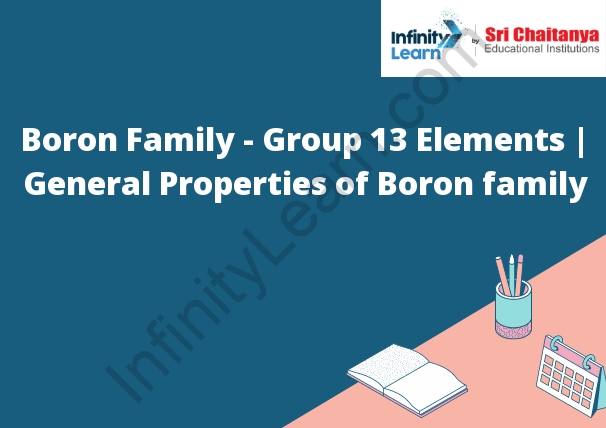Table of Contents
What is Group 13 Elements?
Group 13 elements are a group of chemical elements in the periodic table consisting of aluminium, gallium, indium, and thallium. They are all moderately reactive metals.

The Occurrence of the Boron Family
The Boron family is a group of chemical elements that all have the element boron in their atomic structure. These elements are usually hard, brittle, and have a low melting point. They are also good electrical and thermal conductors. The Boron family includes the elements boron, aluminum, gallium, indium, and thallium.
General Properties of the Boron Family
The Boron Family is a group of elements in the periodic table that includes boron, aluminum, gallium, indium, and thallium. These elements are all located in Group 13 and have similar properties. They are all relatively light metals with low melting points and boiling points. They are all good conductors of electricity and heat.
Physical Properties of Group 13 Elements
The physical properties of Group 13 elements depend on the number of valence electrons they have. The elements in Group 13 have three valence electrons: aluminum (Al), gallium (Ga), indium (In), and thallium (Tl).
Aluminum is a silver-white metal that is ductile and malleable. It is a good conductor of electricity and heat.
Gallium is a soft, silver-white metal that is not very reactive. It is a good conductor of electricity and heat.
Indium is a soft, silver-white metal that is not very reactive. It is a good conductor of electricity and heat.
Thallium is a soft, silver-white metal that is not very reactive. It is a good conductor of electricity and heat.
Chemical Properties of Group 13 Elements
The Group 13 elements are boron (B), aluminum (Al), gallium (Ga), indium (In), and thallium (Tl).
The Group 13 elements are all solid at room temperature. They are all good electrical conductors. Boron is the lightest of the group, while thallium is the heaviest. The Group 13 elements are all silvery in color.
Properties of Aluminum
-Non-toxic
-Lightweight
-Non-reactive
-Non-magnetic
-Non-sparking
-Thermal conductivity is high
-Electrical conductivity is high
Properties of Gallium
Gallium has a melting point of 29.7 degrees Celsius, a boiling point of 2406 degrees Celsius, and a density of 5.9 grams per cubic centimeter.
Properties of Indium
Atomic Number: 49
Atomic Mass: 114.818
Melting Point: 156.6°C (314.7°F)
Boiling Point: 2085°C (3727°F)
Density: 7.31 g/cm3
Phase at Room Temperature: Solid
Properties of Nihonium
Nihonium has not been found in nature and has only been created in a laboratory. It is a radioactive metal that is very unstable. It has a silver-white color and is a good conductor of electricity.
Properties of Element 113 – Nihonium
Nihonium is a synthetic element with the symbol Nh and atomic number 113. It is a radioactive metal that is not found in nature.
Tips for Learning about the Boron Family – Group 13 Elements
1. Read about the Boron family – Group 13 elements on the internet or in a chemistry textbook.
2. Look at the chemical properties of the Boron family – Group 13 elements.
3. Compare and contrast the physical properties of the Boron family – Group 13 elements.
4. Study the electron configurations of the Boron family – Group 13 elements.
5. Learn about the applications of the Boron family – Group 13 elements.
Importance of Learning about the Boron Family – Group 13 Elements
The Boron Family – Group 13 Elements is important to learn about because it is a part of the periodic table. It is also important to learn about because it is a part of the elements that make up everything in the world.







